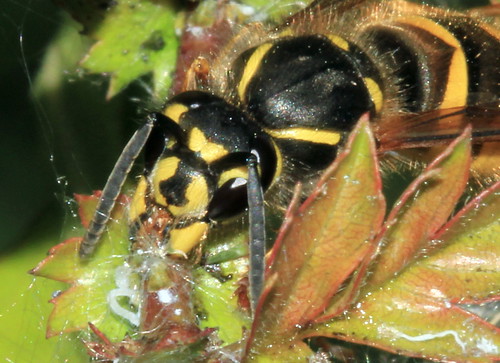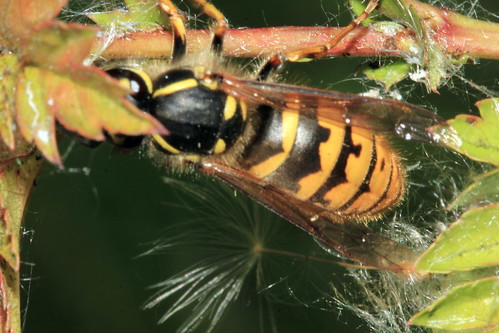Bumblebees Through The Year
This is a short piece on the Bees and Wasps recorded at Cromwell Bottom (CB) or or more particularly their Phrenology = timing through the year. You can click on the links to download a PDF Information Sheet of some of the Bees if you would like to learn more
Bumblebees are perhaps most familiar to most of us. The full spectrum of Bees and Wasps are bewildering in their survival strategies . We have Social bees and Solitary Bees , we have Bees that parasitise other Bees ,hence the term Cuckoo Bees and Wasps that parasitise bees , if not confusing enough !!! Bees of course differ from flies in so much as they have two pairs of Wings (4) not two as in Flies (2) Diptera of course they are usually moving that fast or folded you don't see them
Link Hoverflies or Flowerflies which are the brightly coloured flies that can be seen in Gardens and capitalise on Bees and Wasps By mimicking them with their bright black and yellow abdominal patterns we have over 40+ species of Hoverflies to see at CB
Hoverfly
Identifying some of the similar 25 British Bumblebees an be tricky , even though many are quite distinct , such as the Red Tailed Bumblebee or the Tree bumblebee. We can enjoy our Bees for what they are or if you are interested you can use the Interactive NHM Bee Identifier or print off this handy in the pocket guide PDF Guide 1 PDF guide 2
The Clay Banks and paths along the river are ideal habitats for the Burrows of Solitary Bees.
At Cromwell there is a good frequency of the Honey Bee , hives are kept in woodland not far away
Anthora plumipes The hairy Footed Flower bee generally from March to late May, but there are a few records from February, June and early July.
Bombus sylvestris
Bombus terrestris Buff tailed Bee
Bombus vestalis Females leave hibernation during April or May. New males and females are produced in July and August.
.
Bombus hypnorum Tree Bumblebee ( a new British Bee that has migrated from the continent first recoded in 2001) last year 2013 was a very good year at CB for this species.Late May and early June is peak activity season for this distinctive bumblebee,
Parasites of Bumblebees
Not any form of Bee or Wasp this is Conops quadrifasciatus A thick headed Fly Conops quadrifasciatus is a species of fly from the genus Conops in the family Conopidae. Their larvae are endoparasites of bumble bees of the genus Bombus.
Other Interesting Relationships
There are numerous other relationships which we have yet to understand and have only recently touched upon Osmia bicolour for example builds an nest in a snail shell. Likewise the Oil beetle is a parasite of bees living in nests and completing its life cycle . even our Hoverfly larvae find their way into the nests of Social bees feeding on the detritus . The importance of Bees and Wasps is immensely important to agriculture and pollenation of our crops that keep us fed
Solitary Bees
Nomada flava Group
Andrena haemorhoea The Early Mining Bee
Andrena fulva The Tawny Mining Bee
There are more sheets here if you are interested
Gardening For Bees - Spring
Gardening For Bees -Summer
Gardening For Autumn
Bee hotels
Wasps
Our Wasps include Tree Wasp Dolichovespula sylvestris
Median Wasp Dolichovespula median
Vespula vulgaris Common Wasp
Whilst most Bees and Wasps will go about their business undisturbed please be aware that these are wild creatures and possess the ability to sting and sting in number if provoked . Please respect there wild space and observe passively and without disturbing nests .



No comments:
Post a Comment